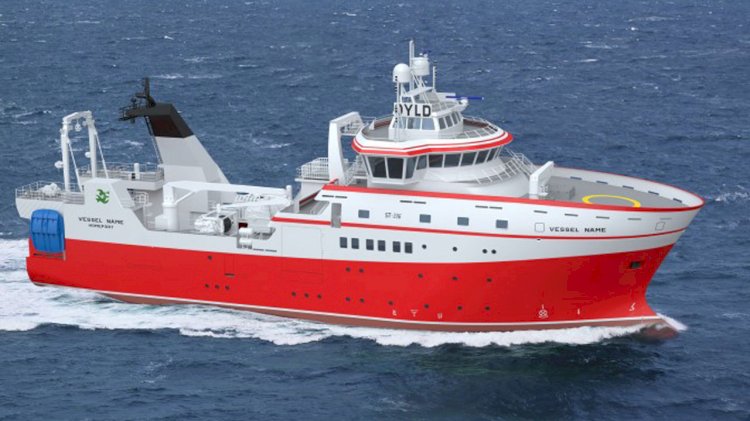Greenland research vessel picks MAN hybrid propulsion package

Minimisation of noise central to composition of propulsion system; vessel has DNV GL’s SILENT F designation.
The Astilleros Balenciaga S.A. shipyard in Spain has ordered a complete MAN propulsion package – including MAN 27/38 and 175D engines, a 5-bladed MAN Alpha propeller and both remote-control and MAN HyProp systems – in connection with the construction of a research vessel for the Greenland Institute of Natural Resources.
The 61-metre, ice-class trawler is designed by Norwegian company, Skipsteknisk, responsible for the design of many other, Arctic trawlers. It will come equipped with modern research and laboratory facilities, as well as accommodation for 32 people. Delivery of the propulsion package is scheduled for Q1, 2020 with the vessel expected to enter service from spring 2021.
MAN Energy Solutions further reports that a large number of fishing vessels featuring a Skipsteknisk design are currently under construction, of which 18 feature MAN propulsion packages.
Lex Nijsen, Head of Four-Stroke Marine Sales – MAN Energy Solutions, said:
“This marks the first time that we have sold an MAN 175D unit to a research vessel, yet another market niche that it capably fills and testament to how versatile a performer this engine is. That it forms part of a complete propulsion package with our 27/38 engine and other MAN equipment is most welcome, and sits well with our intention to increasingly become a supplier of complete propulsion solutions.”
MAN Energy Solutions reports that the vessel’s propulsion package has been assembled with a special focus on minimising noise. As such, the research vessel will be driven by a diesel-mechanical set-up with the 27/38 acting as main propulsion and the MAN 175D and D2862 engines as auxilliary gensets. The 175D and D2862 will receive double-resilient mounting to comply with the vessel’s SILENT F notation. Similarly, the fully-integated MAN HyProp ECO frequency drive for DE operation system will control the rotation of the five-bladed Alpha propeller. Notably, both auxiliary engines are double-resilient seated.
The DNV-GL’s SILENT class is the first set of rules for underwater noise emission from vessels ever published. It provides owners of acoustically-sensitive vessels with concise, realistic criteria regarding underwater noise-emissions. It also gives environmentally-conscious owners an opportunity to demonstrate a low eco-footprint. Compliant ships are given the SILENT notation with an additional letter denoting a particular segment. In the case of the new research vessel, ‘F’ is reserved for vessels engaged in fishing.
The newbuilding will replace the Institute’s former research vessel, ‘Paamiut’, that also featured a complete MAN propulsion package but the new vessel will be equipped to carry out many more types of surveillance and research. It will be capable of fishing by bottom-trawling (shrimps, halibut, cod) and pelagic trawling (mackerel, etc.). A drop keel and acoustic equipment will enable the Institute to carry out acoustic examinations of depth soundings and other, pelagic resources.
The vessel’s main purpose is to ensure the scientific basis for the sustainable exploitation of the living resources in offshore West and East Greenland. With the ship’s size and expanded capabilities, the Institute will also be able to search new, more-northerly, fishing grounds and alternative fish stocks.

























































































































































